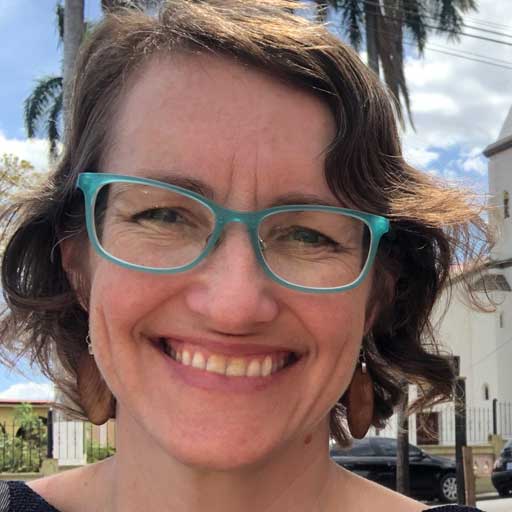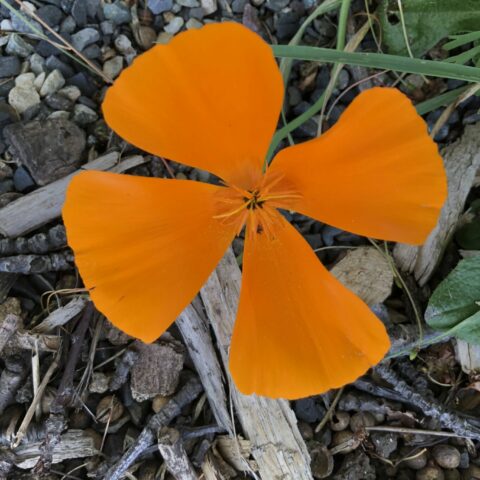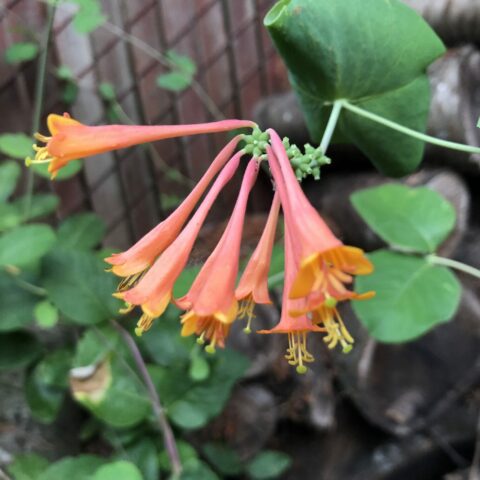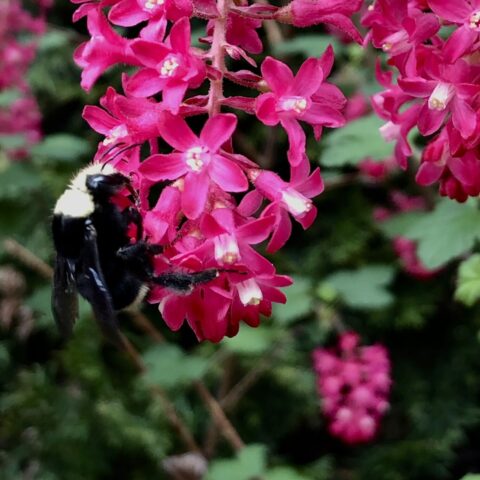The Heart of Reading Nature
Do you feel like a part of nature, or apart? There are many ecological connections between humans and nature to learn about, but knowing we are a part of nature is different from feeling that connection.
From the canyons of city skyscrapers to mountain wilderness, we are a part of nature. Nature is inside us too, we are made of nature. Connect with nature where you live – your natural habitat – by planting native flowers and trees for pollinators, birds and people. Reading Nature’s workshops draw from a design process that values both head and heart, science and art for a balanced approach to nature.
I think one of the big problems with science that has led to an awful lot of unintentional cruelty is this division between head and heart. And the perception that a good scientist must be totally objective and that emotion mustn’t come into it, to me that’s very wrong. To me, only when head and heart work in harmony can we achieve our true human potential. – Dr. Jane Goodall in Opening a Dialogue, MasterClass
Meet Rachael (Rae) Pecore-Valdez, she/her

Environmental Scientist, Educator, Storyteller, M.S.
- Habitat Consultant
- Licensed Landscape Construction Professional
- Certified TRE® Provider
- Nature Connection Educator
I was born on a farm near Aurora, Oregon, or the homelands of the Ahantchuyuk band of the Kalapuya people, Molalla, Confederated Tribes of the Grand Ronde and of the Siletz (https://native-land.ca/). Raised by strong nature mentors in a multi-faith community, I learned about local plants and trees early on through stories. With family roots in the Northwest and ancestors from Slovakia, Montreal, Norway, Ireland and the UK, I come from the stories of many places.
At Oregon State University, I studied BioResource Research and completed an honors thesis evaluating a biomarker for pesticide exposure in juvenile steelhead. While I adored nerding out on science, I knew the lens of Western science was missing the big picture, or how all the dots connected. This inspired an MS in Holistic Science at the University of Plymouth/Schumacher College in SW England. It was there, near the place where England launched a colonial culture westward, that I studied a decolonizing approach to scientific inquiry that values multiple ways of knowing, including a role for feeling, or heart.
I then worked for various nonprofits organizing volunteers to monitor water quality, clean up plastic off our beaches, and lead habitat restoration events. I also taught outdoor survival skills, managed kid’s camps and Community Ed Home & Garden classes. A passion for wildlife tracking inspired by Tom Brown Jr’s Tracker School drew me to produce the Wolf OR-7 Expedition, a documentary film about the people along Wolf OR-7’s dispersal route. Eventually, I found that work in habitat restoration brought my passions for wildlife, water and trees together.
In 2017, my spouse and I bought our first home and I finally had the freedom to plant and care for my own yard. I enrolled in Portland’s Backyard Habitat Certification Program and was later hired on as a Backyard Habitat Technician. It was during a habitat assessment in my yard that a colleague noted a patch of jay and squirrel planted baby oak and walnut trees, a pop-up nursery! Grappling with childlessness at the time, I just didn’t have the heart to pull these baby tree sprouts. Instead, I began finding suitable homes for my baby trees and learned about the incredible habitat value of oak trees. I’m now on track to earn an Arboriculture Certificate at PCC, and am hooked on tending to trees and understory habitat.
Working in the field of conservation is a great joy, however, a focus on nature goes hand in hand with an awareness of pollution and stressed out ecosystems. Pollution (including climate change), environmental injustice and increased human/wildlife conflicts with habitat loss are real and stressful! I find that walking and sitting among trees is vital to my mental health. As a person with sensory processing sensitivities, trees and rivers have been my go-to places of calm since I was a child. I also maintain a personal practice of Tension Release Exercises (TRE®) to shake off stress and keep going. I became a certified TRE® provider in 2022.
It’s been a winding trail, but I am excited to assist you in adding habitat trees and understory to the patch of earth you currently care for. As a Habitat Consultant, Educator and TRE® Provider, my working philosophy is rooted in a trauma-informed, equity-centered and place-based approach.



